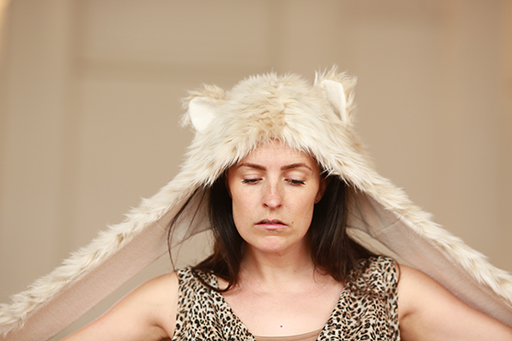Artists are often at the forefront of new waves of socio-political change. Whether you’re talking about the birth of democracy or the recent #metoo campaign, we’re usually there, agitating or at least sparking discussion. But in a country where arts funding is under near-constant threat and the fight for audience attention is fierce, are we as brave as used to be? In the recent Nick Enright keynote address Australian playwright/provocateur Wesley Enoch made a case for no. Australian artists, he said, were ‘too concerned with upsetting audiences, politicians, sponsors, donors, funders, we have become timid in our role as storytellers.’ So, what about dance? Have we absconded our duty?
Laura Boynes is a choreographer and dancer renowned for her politically-charged works. In response to Enoch’s charge, Boynes doesn’t hesitate. ‘I agree. Now more than ever we need to step up and speak our minds. Like celebrities and the media, performance also has the ability to reach a broad audience, and we should be using this platform to be bold and debate current issues more often.’
 Laura Boynes—from the creative development of Wonder Woman. Photo: Matt Cornell
Laura Boynes—from the creative development of Wonder Woman. Photo: Matt CornellBoynes says that the political context of her work is key. ‘I use performance as a tool to inspire critical thought and reflection on the contemporary world', she says. ‘Current global events definitely affect my creative process. Even when I believe I’m creating work about another topic, there is always an undertone of this.’
The choreographer is currently in the throes of creating a new work that deals directly with many of the issues raised by the recent #metoo campaign, interestingly one of the issues Enoch identified in his speech. ‘It’s a new solo work—Wonder Woman—which is a response to contemporary female gender issues past and present', Boynes explains.
‘I’ve commissioned choreographers Julie-Anne Long and Adelina Larsson to each create a work on me as they have made work about and for women throughout their careers. The work is a physical provocation that does not adhere to a single feminist ideology but presents a platform for multiple voices to be heard. Feminist work is not new but feels timely as we face the same issues women have been fighting against since the 1960's and 70's. The turnout to international & national women's marches in 2017 and January 2018 confirmed that for us. With a current international focus on women’s rights and social media campaigns like #metoo empowering women around the world, Wonder Woman is a direct response to these events.’
For Boynes, the revelations that came to light as part of #metoo were sadly unsurprising. ‘I believe the dance industry wasn’t surprised by the #metoo campaign', she sighs. ‘Unfortunately, nearly all women have had an experience that sees them raising their hand under this hashtag. However, in my experience I feel that dance and contemporary dance remains less tainted by these accusations than other art forms, perhaps because the majority of the dance industry is female? Gender balance is certainly still something we are working on.’
But while contemporary dance has perhaps a stronger footing on gender equity, can the same be said of the genre’s more traditional forms?
‘Contemporary dance has now reached a point where currently there are more women running Australian contemporary dance companies than men, but unfortunately, this is not the case in the classical ballet industry', Boynes continues. ‘I do think that ballet is also starting to move with the times however historically artistic directors and choreographers for ballet have largely all been male.’
Ausdance President Gene Moyle says the organisation has a key role to play in the ongoing conversation around these issues. ‘The #metoo and #timesup campaigns are important ones for all sectors, but particularly for the arts. Ausdance National is part of a broader network of sector peak bodies and organisations that are currently in discussions regarding current gaps, learnings from other industries, as well as what actions are required to assist in supporting and addressing such issues. This builds upon the key work that Ausdance National has led around Safe Dance Practice in both training and professional settings, and continues the commitment the organisation has to supporting safe and nurturing environments across the sector.’
And maybe that’s the take-away from the current debate? Things are far from equitable, but the desire for change is strong. And just as the time is ripe for brave political leadership, the zeitgeist is with artists such as Boynes, creating works underpinned by a firm belief in social change.

